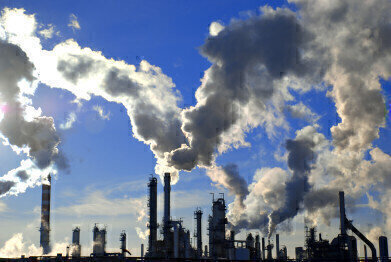Air Monitoring
What is Carbon Capture?
Sep 15 2014
Carbon Capture, or Carbon Capture and Storage (CCS) to use its full title, describes the process where carbon dioxide (CO2) is captured from energy generation and industrial processes, transported to a storage facility and then stored. The aim is to reduce the amount of CO2 entering the atmosphere, thereby reducing the impact of CO2 on anthropogenic climate change. It is estimated that up to 90% of the CO2 emissions can be captured from fossil fuel power plants and other industrial processes that generate CO2.
The UK government has recently launched a £1.1 billion programme to become a global leader in CCS technology. This includes a competition to support practical design, build and operation of a commercial CCS plant, along with a research programme using academics and industry experts to find the best way forward with the technology. Some current research initiatives are discussed in this article: FTIR Gas Analyser Supports Carbon Capture Research.
Why is CCS important?
CCS is proposed as an important part of the technologies required to combat anthropogenic climate change, alongside renewable energy sources, nuclear power and energy efficiency. Assuming that the current energy usage continues, then nearly 70% of power generated by 2050 will come from fossil fuels — with a significant amount of CO2 released into the atmosphere.
The International Energy Agency (IEA) estimates that CCS can contribute close to 20% of the cuts in the global emissions of CO2 output needed by 2050 to meet climate change targets. And to get achieve this reduction, the IEA estimates that around 3400 CCS plants are needed globally by 2050.
How does CCS work?
There are essentially three components to CCS, capture of CO2, transport and storage. And, there are currently three methods to capture the CO2:
1. Pre-combustion capture
In this method, the fuel — coal or gas — is converted into hydrogen and CO2. The hydrogen is then burnt as fuel to produce power and the CO2 is removed for storage. This process cannot be retrofitted to existing plants, but is seen as a good option for new plants.
2. Post-combustion capture
The CO2 is removed or scrubbed from the plants’ exhaust gases. This process can be retrofitted to existing plants and also to suitable manufacturing processes.
3. Oxyfuel combustion
The fuels are burnt in pure oxygen rather than air, therefore the exhaust gases are water and CO2 and these are easily separated. Again, this cannot be retrofitted to an existing plant, and an air purification plant is needed to provide the oxygen.
Carbon Storage
Once the CO2 has been captured, it is then transported via pipeline to where it will finally be stored. To date, two locations are used for storage – underground and underwater. According to estimates by Science Daily, the planet can store up to 10 trillion tons of carbon dioxide. Unfortunately, this only allows for 100 years of storage for all human-created emissions – and we will hopefully need much longer than that.
Digital Edition
IET 34.2 March 2024
April 2024
Gas Detection - Biogas batch fermentation system for laboratory use with automatic gas analysis in real time Water/Wastewater - Upcycling sensors for sustainable nature management - Prist...
View all digital editions
Events
Apr 22 2024 Hannover, Germany
Apr 22 2024 Marrakech, Morroco
Apr 23 2024 Kuala Lumpur, Malaysia
Apr 23 2024 Kintex, South Korea
Apr 23 2024 Edmonton, AB, Canada


















